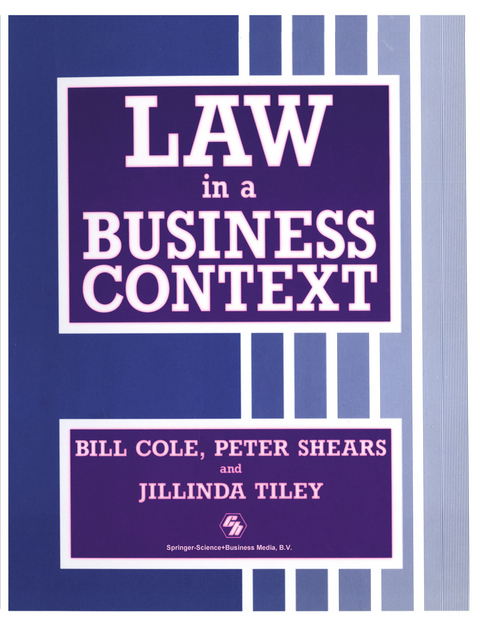
Law in a Business Context
Chapman and Hall (Verlag)
978-0-412-37520-0 (ISBN)
This book aims to demonstrate that legal complaints form the background for making business decisions and in the text legal principles are grouped according to their relevance to business. After surveying the sources of law, the court system and out of court settlements (where most legal disputes are resolved), the authors discuss the legal forms which a business can take, employment legislation, health and safety regulations, the sale of goods, product liability, constraints on advertising and insurance. Certain topics for example ways of protecting innovative ideas (patents, trademarks, designs), are discussed in more detail than is usual at this level. The role of trade and consumer associations, the Data Protection Act 1984 and the supply of credit are among other subjects examined. At the end of each chapter there are suggestions for further reading. and these references include not only academic texts, cases and statutes, but practical (and sometimes free) guides issued by, for example, trade associations, government departments, banks and the Equal Opportunities Commission.
Case studies have been given in all chapters to illustrate the themes under discussion, sometimes with the addition of contemporary newspaper cuttings. Questions for discussion and problems for further consideration are given at the end of each chapter. Written for students following courses in business and management at degree level or equivalent, it will also be useful to students on BTEC Higher courses, post-experience or post-graduate management courses and professional courses in, for example, accountancy or marketing. This book is one of six titles in the Business in Context series which aims to provide business-centred, rather than discipline centred, coverage of the main subjects currently associated with a wide range of business studies programmes.
Part 1 The legal background: classification of law; where does law come from?; how and why does law change?; how and by whom is it enforced?; how is the law useful to business?; what does the law cost?. Part 2 The changing legal environment: the role of government and the increasing scope of legislation; impact of the common law - constraints of the law of contract; impact of the common law - constraints of the law of tort. Part 3 The organizational context of business: types of business organization; setting up a business enterprise; deciding which form of enterprise to operate; terminating the enterprise. Part 4 Innovation and research: environmental aspects; strategic aspects; organizational aspects. Part 5 The production process - health, safety and liability: the production process; the end product. Part 6 Marketing, selling and advertising: attracting business/advertising; the sale; service and supply contracts; the role of public bodies; credit. Part 7 The personnel function: recruitment and selection; employee references; contracts of employment; termination of employment; the data protection act and personnel records; trade unions and industrial relations; union membership agreements (closed shops); trade unions and individual rights. Part 8 The finance function: share capital or contributed capital; loan (or debt) capital; wrongful trading; insurance and the business enterprise. Appendix: case summaries.
| Reihe/Serie | Archives of Gynecology and Obstetrics ; 4 |
|---|---|
| Zusatzinfo | 37 Illustrations, black and white; XVI, 233 p. 37 illus. |
| Verlagsort | London |
| Sprache | englisch |
| Maße | 189 x 246 mm |
| Themenwelt | Recht / Steuern ► EU / Internationales Recht |
| Recht / Steuern ► Wirtschaftsrecht ► Handelsrecht | |
| Wirtschaft ► Betriebswirtschaft / Management ► Allgemeines / Lexika | |
| ISBN-10 | 0-412-37520-6 / 0412375206 |
| ISBN-13 | 978-0-412-37520-0 / 9780412375200 |
| Zustand | Neuware |
| Haben Sie eine Frage zum Produkt? |
aus dem Bereich


